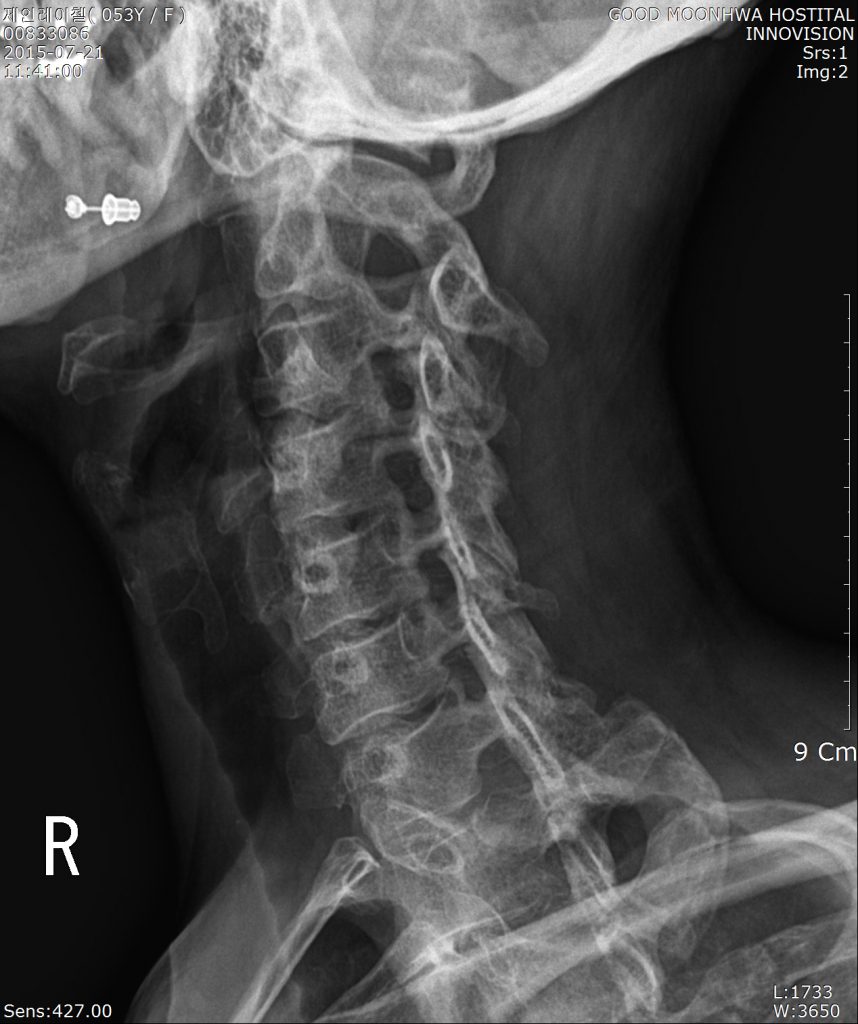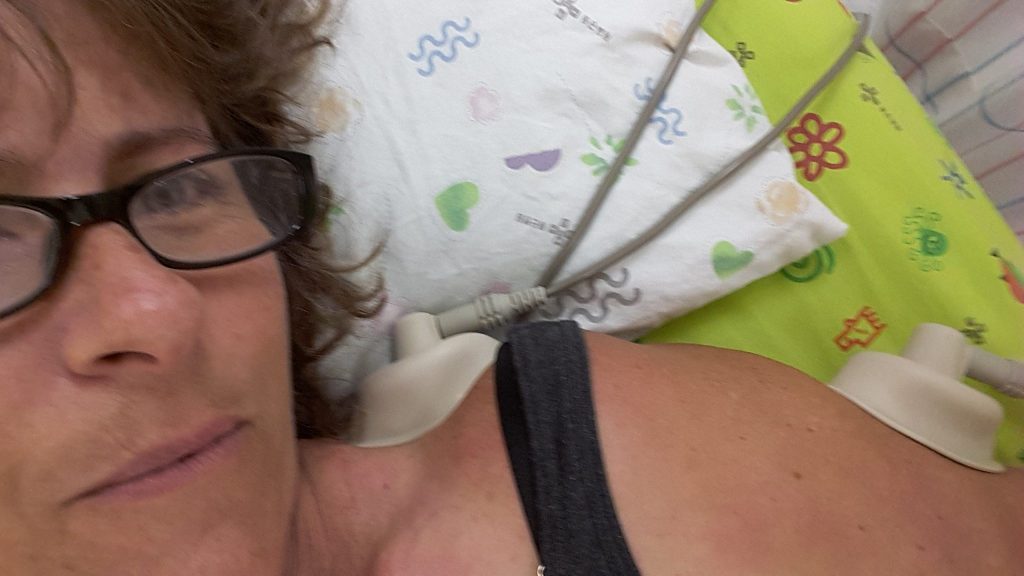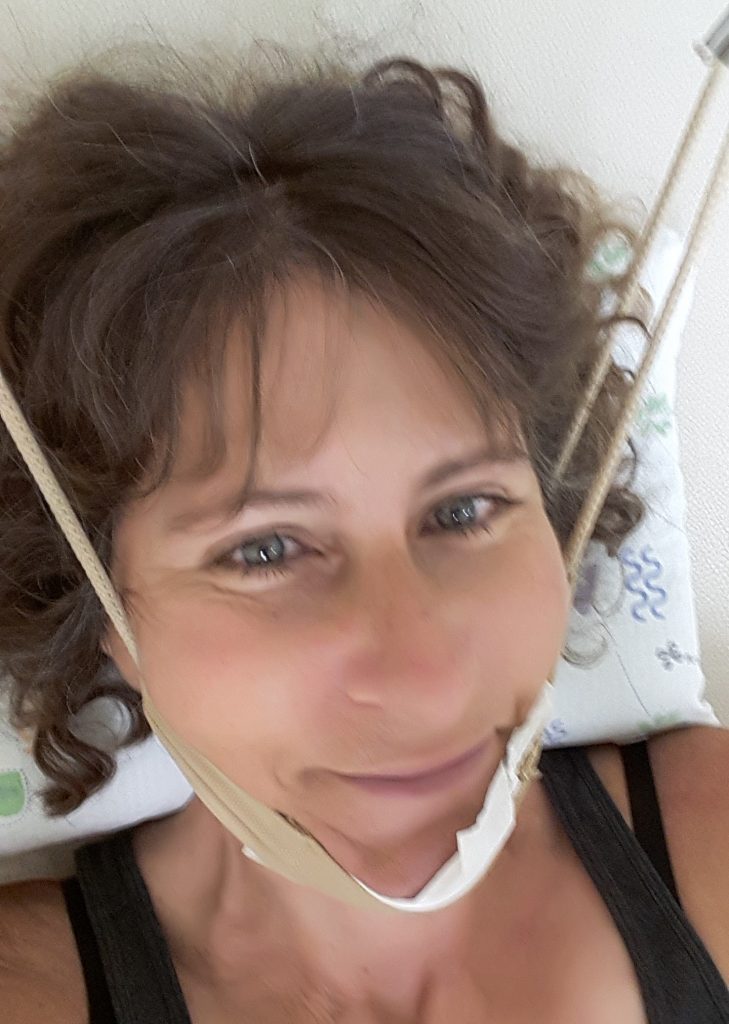Physical Therapy, Korean-style!
On my recent trip to South Korea, my left arm began to hurt. I dismissed it as a muscle ache, probably from carrying my luggage up and down metro stairs.
Little by little, though, it got worse. I couldn’t sleep because I couldn’t find a position in which my arm didn’t hurt. When my arm started tingling, two of my fingers went numb, and I had only slept fitfully for three nights, I decided it was time to see a doctor.
I was in Busan, and my Airbnb host helped me find a hospital. Searching on-line, we found Good Moonhwa Hospital, which had a website in English and, in advertising, claimed to be available for foreign visitors.
Arriving at the hospital via metro, I was pleased to see that one section of the reception desk had a sign indicating it was intended for foreign visitors. The woman there, though, silently signalled to me to wait and summoned a man from an office behind her. He spoke passable English and asked what my problem was.
I explained about my arm and the tingling and that I’d had a hernia before. I asked to see a neurologist. I didn’t really expect to see one at such short notice, but I thought it was worth asking. The man told me to wait and went away.
After only a few minutes, a nurse walked up to me and, in English, asked me to come with her. Leading me to the elevator and then through a warren of hallways, she brought me to a doctor’s office.

After she ushered me to a seat in the hallway, I waited, with the nurse beside me, making small talk.
“Where you from?”
“The Netherlands.”
Puzzled look.
I spoke more slowly: “The Netherlands. Holland.”
She still looked puzzled, but nodded and smiled politely.
It was only a matter of minutes before another nurse opened the doctor’s door and signaled me that it was my turn. I wasn’t surprised to find out the doctor I’d been assigned wasn’t a neurologist; he was an orthopedist. He couldn’t talk to me, however: he didn’t speak English. Instead, the nurse who’d been waiting with me, whose English clearly wasn’t stellar, translated for him. (There were two other nurses in the room, by the way, but I had no idea what they were doing there. They stood in the background, saying nothing.)
I explained my symptoms slowly and simply. The doctor, who seemed to understand what I was saying, responded in Korean, and the nurse spoke to me in English. He spoke at length while her translations were single sentences. I have no idea what I might have missed.
A couple of x-rays told him that I had a hernia in my neck, in a different place than I’d had a hernia before. He prescribed some medications—a painkiller, a muscle relaxant, and something to help my stomach handle the other two—and sent me on my way.
The nurse, who had already guided me to the cashier’s office and back so I could pay, and to the x-ray department and back, now signaled to me to follow her again. First we went to a pharmacy, where she got me my medications. I thanked her for taking so much time to guide me around the hospital. She replied, “It is good. Then I do not have to work.”
I continued to follow along obediently, thinking that the nurse would now lead me to an exit. Instead, we ended up somewhere in the basement of the hospital.
“What are we doing here?”
“Physical therapy.”
Physical therapy? In just one visit? It seemed pretty pointless to me, but it might be interesting!
I shouldn’t have assumed that “physical therapy” in South Korea means the same thing as “physical therapy” in Holland. This was unlike any physical therapy I’ve ever heard of! Picture this:
First I am ordered to lie on a gurney. A nurse guides me to a position where my left shoulder and arm are on top of a hot pad, and she wraps the pad around me so that it also covers my arm on top. I lie with the heating pad warming my left side for about 20 minutes. It feels good, and I’m so tired that I doze off. This is physical therapy?

Physical Therapy, Step 2
The nurse returns, waking me, and removes the hot pad. Now she rolls a machine up to the table and unfurls three wires from it. Each is tipped with a rubber cup. I think, “Cupping. She’s going to perform cupping on me.” Cupping involves attaching a cup to the skin using suction. I thought of a man I saw in China once who was covered with very neat round bruises, an obvious sign of cupping.
Should I let her do this to me? I’m not at all sure it’s a good idea, but, feeling drowsy and passive, decide in an instant to go along with it. I figure it’s all part of the experience, even though I have no belief that it’ll work.

The nurse asks, “Where is pain?”, pointing at my arm and holding up three fingers. I point out three spots on my arm and shoulder, and she attaches the rubber cups to each spot. The cups are connected by wire to the machine, and, when she turns it on, a light electrical current is sent through the wires.
After the initial shock, (pun intended), I realize that this is not cupping, and not only doesn’t this hurt, but it feels good. The three cups are synchronized, so that the impulses seem to move from place to place. Now and then the impulses change, and the net effect is that it feels like a massage. The “hands” move rhythmically, sometimes hard, sometimes gently. This feels like it could actually help!
I doze again as I relax into it, and feel a vague sense of disappointment when the machine turns itself off, waking me, about ten or fifteen minutes later.
Physical Therapy, Step 3
Removing the suction cups, the nurse rolls the machine away. She quickly returns with another machine on wheels. This one has what looks like a fluorescent light on top of it, and she sets it up horizontally above my arm. Draping a cloth over it, presumably so it won’t hurt my eyes, she turns it on and again disappears.
The light therapy doesn’t make any impression on me. The light feels a little warm, but other than that, I can’t see how zapping my arm with light (perhaps UV?) is going to help my hernia or the pain. Yet again, I fall asleep.
Physical Therapy, Step 4
Awakened again, a nurse (“My” nurse has disappeared by now, so little spoken communication is possible.) escorts me to a different gurney in a corner. I lie down, and she ties a strap under my chin and attaches it to a machine I can’t see. Now I’m getting nervous. This seems a little torture-chamber-ish to me. When she turns the machine on, I realize what it is: traction. The machine pulls on my chin gently for a minute, presumably stretching my neck a bit, then relaxes it again for a minute. And so on. It isn’t uncomfortable—it doesn’t pull very hard—but I can’t sleep this time. I fight the urge to giggle.

That’s it. Korean physical therapy in one visit, without any physical contact with a human being or discussion at all. No one suggests I come again to get more physical therapy. No one instructs me about exercises to do at home. Nothing.
As I leave the hospital, I am bemused by the whole experience. Is this meant to cure my complaint? Is one visit meant to be enough? The heat and the electrical massage certainly feel good, but I wonder if one shot of physical therapy administered entirely by machine could actually do the trick. Perhaps there is some other goal that I’m not aware of? Maybe some sort of Korean tradition requires physical therapy after a hospital visit?
It occurs to me, as I walk, that I’d like to do it again. For the hour or so I was there, the pain wasn’t bad at all, and seemed to go away entirely with the cupping. I even fell asleep. If I could keep that machine hooked up, I could get a whole night’s sleep. I hope that the pills will kill the pain instead.
I discover the answer soon enough: Korean-style physical therapy hasn’t cured me. On the short walk to the metro, my arm starts hurting again.



Haha the next time you come by Singapore/Malaysia I’ll take you to the famous Chinese sinseis. They can fix most of your joint problems with one bone-cracking maneuver. They are super scary at first but after you get healed you will feel amazed! Best part is there’s no bills and you pay what you want.
Having said that, don’t visit JUST ANY Chinese Sinsei. Some of them are fakes and may make your problem worse than it originally is..
I’d be scared to have anyone mess with my neck! If they did it wrong, I could end up paralyzed, couldn’t I? I’ll keep it in mind, though; maybe they can help with the lower back pain I sometimes get…
That was an interesting experience! I’ve had similar treatments in therapy for other issues. Interestingly, I often can’t sleep on my left side because my arm will ache and my fingers go numb while sleeping. I’ve just never dealt with it though, but I probably should one day. Did it stay with you?
No, my arm only hurts occasionally now, though it still tingles sometimes and I still don’t have feeling in the tips of two of my fingers. You might want to try a different pillow to see if the problem is actually in your neck. Anyway, thanks for commenting!
Being one for the details – How do you know its a hernia in your neck? Can you see it on that X-Ray? (If so where? LOL)
The traction thing looked interesting – but you’d need numerous sessions surely for it to do any good – Maybe you should buy one! 😉
Haha! I can’t see it either. There were four x-rays, and I just posted one randomly here. He claimed that he could see one between the 5th and 6th vertebrae. The next doctor I saw, a neurosurgeon in Seoul, didn’t even look at these and ordered an MRI instead. There it was clearly visible, as was the old one, between the 2nd and 3rd. In any case, they can figure out that the problem is in the neck by observing exactly where the pain/tingling/numbness is. In my case, it had to be nerve-related since my first and second finger were affected but never the other ones, and the tingling was only in certain parts of my arm. As for the traction: thanks but no thanks! The massage machine, on the other hand…
Wow, that sounds terrible! Do you know if all (or at least most) physical therapy over there is like that? Or was it just one particular facility, with sub-par practices? I’m curious, because I can’t imagine that everyone with chronic pain in the entire country just deals with it. I wonder if they have some other form of treatment that is more common.
I wouldn’t call it sub-par. They gave me medications as well, but I only just got them that day so I didn’t know yet if they’d work. When I got home to the Netherlands I also only got medications. So if anything you could say their treatment was better because I got something besides the medications! I have no idea if this was a standard treatment or not; I just reported what happened to me!
Ah, I just saw that your link goes to a physical therapy practice! So this is sub-par, in your opinion? The doctor here in Holland just gave me painkillers, which worked. I’m not taking any anymore. He didn’t suggest physical therapy, but I’ve been thinking I should go anyway, to ask about what I’m doing that’s caused me to get hernias in my neck twice now.
Even if it wasn’t a permanent fix, it sounds like it helped. I would think that if you could have done it over a period of time it would have been better. How was the cost?
It was very cheap, but I’m not sure which of the bills it was, since they’re all in Korean! I think it was 15000 won, which is about 15 euros, I think. Going every day for a while would have helped, I think.
That is good that it helped for at least a little while. I wonder if multiple treatments would start to actually cure the pain. It’s definitely something I would love to try out myself at least once.
I think it very well might have helped if I went regularly for a while. I’m planning to go to a physical therapist here at home; I’m curious to see what he recommends.
Looks like torture, glad it helped!
Thanks!
Though it can be a bit nerve wracking at the time (what with the language barriers) I always appreciate the fact that we have gotten to experience medical care in so many different countries! That may sound odd, but I just feel like it is an experience most people don’t get to have. Since we travel full time we have had dental cleanings, stitches or other small medical procedures in so many different places!
I agree, as long as you can keep the mindset of “This is an experience.” rather than “This is not as good as at home because it’s different.” I’ll be posting about this in a few weeks: my advice as to how to deal with getting medical care abroad, based on my experiences in Korea.
No doubt that Japanese, Chinese and Korean people always looks for interesting and effective ways for physical therapy. And this Korean therapy style is definitely one their great creativity. I like the way it has been done and if I get the opportunity to take this massage, I’m surely give it a try.
have gone through a lot of physical therapy because of the many sports that I play, but I would really like to be able to treat myself sometimes, or even prevent a lot of injuries from doing physical therapy as a prevention tool. Physical therapy seems like something I would be good at since I am so interested in it, so as I read more blogs, I might be able to figure out if this is the career move I should consider. Evidence in motion will probably be the first blog I look into just because of the name.
I wouldn’t mind having one of those machines with the suction cups so I could give myself a massage!
Thank you for your story . I think Korean phsical therapy is also one of good ways to treat your arms .
That massage machine sure felt good!
Thanks for sharing
Thanks for sharing your experience with all .. Korean has a robust medical system. Coming from a background in massage, I find the Korean approach much more to my liking. Rather than dosing up the body with meds for two weeks, Korean doctors usually prescribe 3-4 days of meds and prefer to use more natural methods to heal.
Hi Rachel. Thank you for sharing. I do not think that electric spinal stimulation is enough in itself…it rather temporarily relieves pain and does not really eliminates the root cause of back pain. What might help is regular PT exercises with posture correction using braces or bands. But posture braces are also for temporary relief and nothing can replace good old exercises. Good luck
Wow, very interesting post! Awesome that they did some physical therapy though it can definitely help a lot!
went to one physiotherapy center at my home town its helps a lot.
Hello Rachel, first of all, thank you so much for sharing this amazing blog. physical therapy is the best solution for our all body pain related problems. I have never heard about this Korean therapy. I love the way that you describes the things. You have shared a amazing life experience. Thanks again!
You’re welcome!
Hey Rachel,
Thanks for sharing your experience and I hope you are now well and haven’t pain in your arm. Have a nice day;)
While the pain was in my arm, the problem was in my neck. It has subsided somewhat, but still starts hurting if I, for example, look up for too long. As long as I’m careful it seems to be fine.
If you feel pain in the disc of backbone then the most easiest way for you to must concern with the physical therapist with the reposts of cidi scans and MRI and understand all the guidelines with the steps of physical exercise which help you to eliminate the pain of backbone rapidly you will be also feel better after some period of a time ,otherwise the pain in your backbone disc are increase with the passage of time ,So take care of your life and apply all the guidelines of doctor in the routine of daily life .
Thanks.